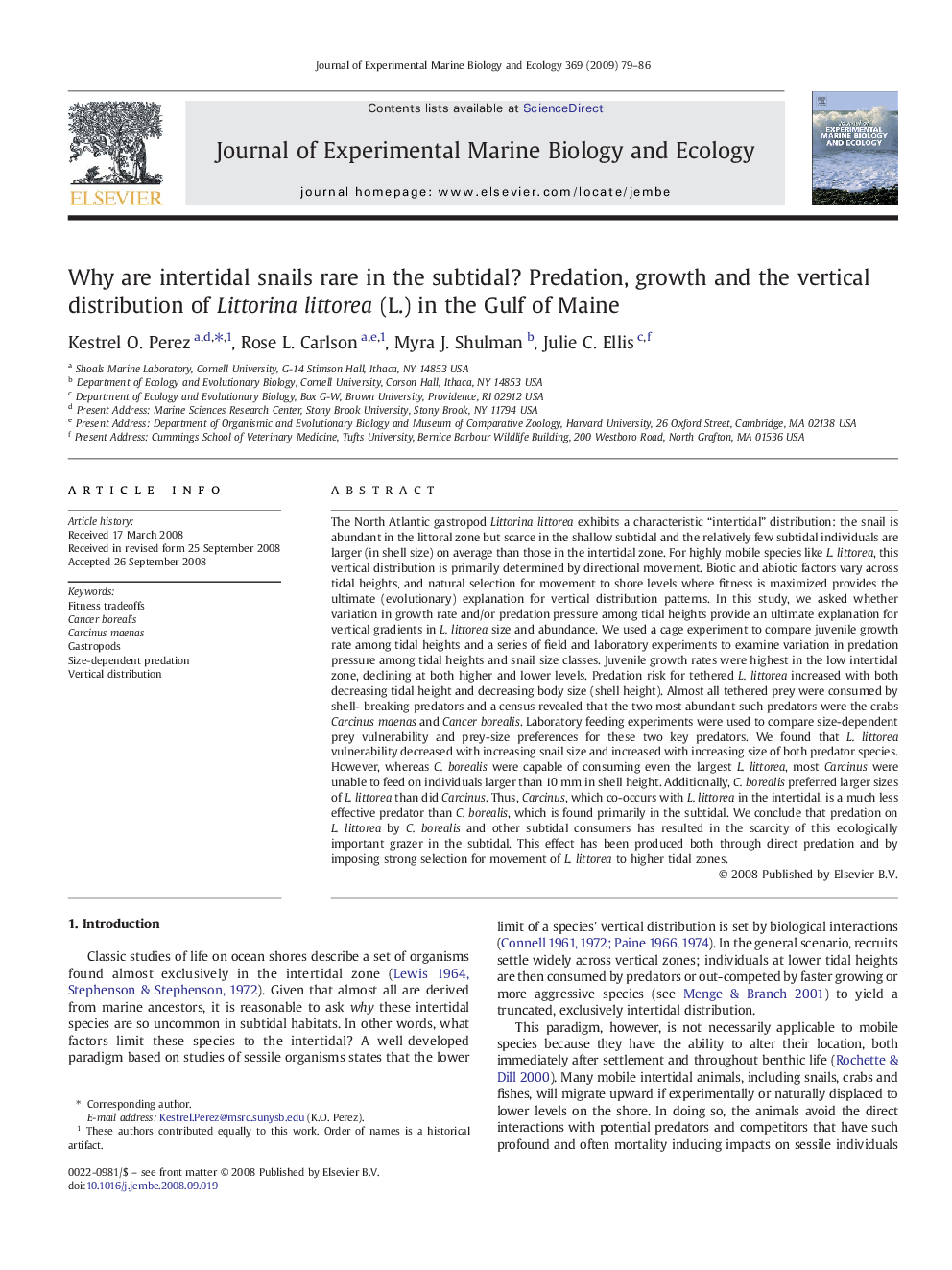| کد مقاله | کد نشریه | سال انتشار | مقاله انگلیسی | نسخه تمام متن |
|---|---|---|---|---|
| 4397059 | 1305862 | 2009 | 8 صفحه PDF | دانلود رایگان |

The North Atlantic gastropod Littorina littorea exhibits a characteristic “intertidal” distribution: the snail is abundant in the littoral zone but scarce in the shallow subtidal and the relatively few subtidal individuals are larger (in shell size) on average than those in the intertidal zone. For highly mobile species like L. littorea, this vertical distribution is primarily determined by directional movement. Biotic and abiotic factors vary across tidal heights, and natural selection for movement to shore levels where fitness is maximized provides the ultimate (evolutionary) explanation for vertical distribution patterns. In this study, we asked whether variation in growth rate and/or predation pressure among tidal heights provide an ultimate explanation for vertical gradients in L. littorea size and abundance. We used a cage experiment to compare juvenile growth rate among tidal heights and a series of field and laboratory experiments to examine variation in predation pressure among tidal heights and snail size classes. Juvenile growth rates were highest in the low intertidal zone, declining at both higher and lower levels. Predation risk for tethered L. littorea increased with both decreasing tidal height and decreasing body size (shell height). Almost all tethered prey were consumed by shell- breaking predators and a census revealed that the two most abundant such predators were the crabs Carcinus maenas and Cancer borealis. Laboratory feeding experiments were used to compare size-dependent prey vulnerability and prey-size preferences for these two key predators. We found that L. littorea vulnerability decreased with increasing snail size and increased with increasing size of both predator species. However, whereas C. borealis were capable of consuming even the largest L. littorea, most Carcinus were unable to feed on individuals larger than 10 mm in shell height. Additionally, C. borealis preferred larger sizes of L. littorea than did Carcinus. Thus, Carcinus, which co-occurs with L. littorea in the intertidal, is a much less effective predator than C. borealis, which is found primarily in the subtidal. We conclude that predation on L. littorea by C. borealis and other subtidal consumers has resulted in the scarcity of this ecologically important grazer in the subtidal. This effect has been produced both through direct predation and by imposing strong selection for movement of L. littorea to higher tidal zones.
Journal: Journal of Experimental Marine Biology and Ecology - Volume 369, Issue 2, 28 February 2009, Pages 79–86